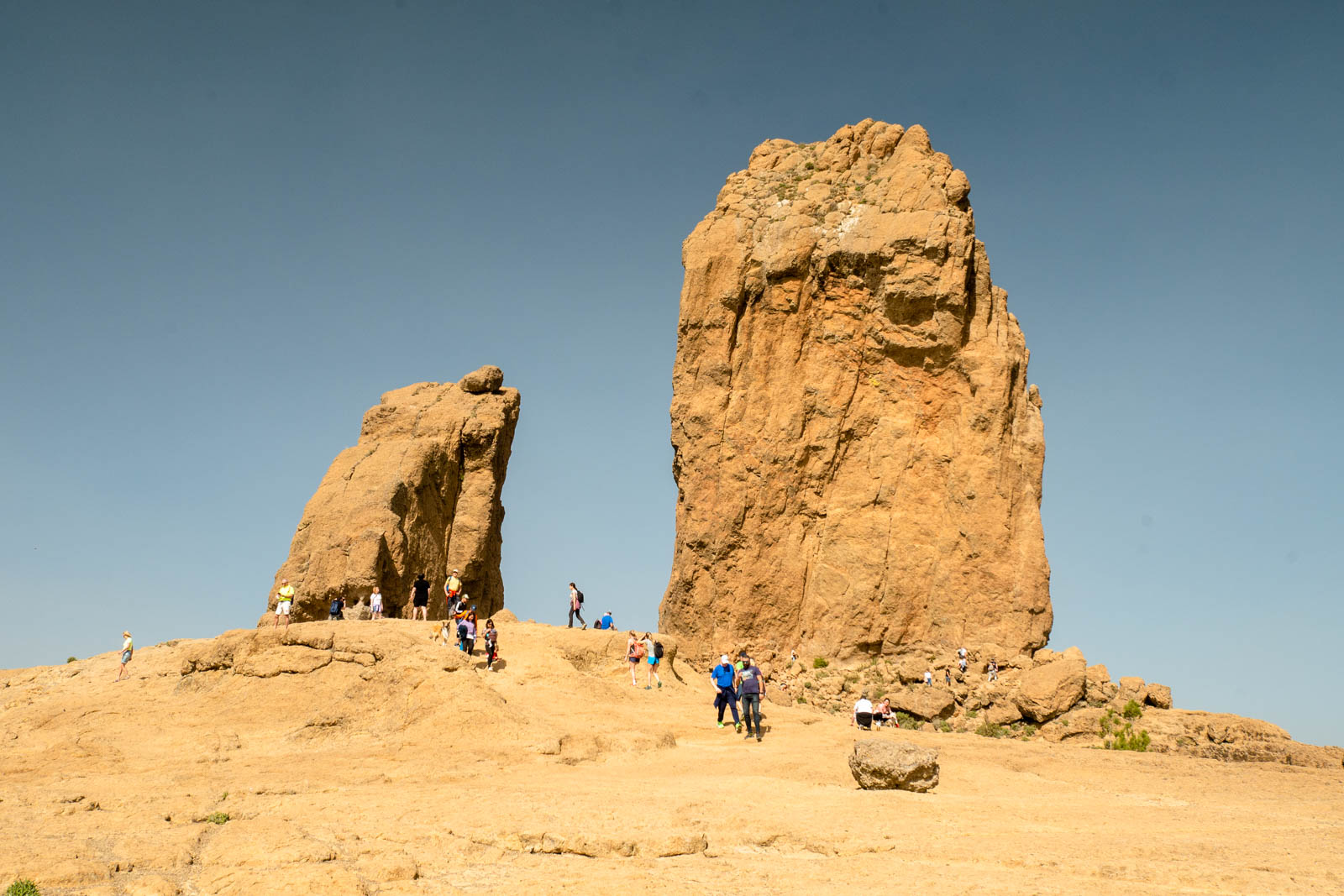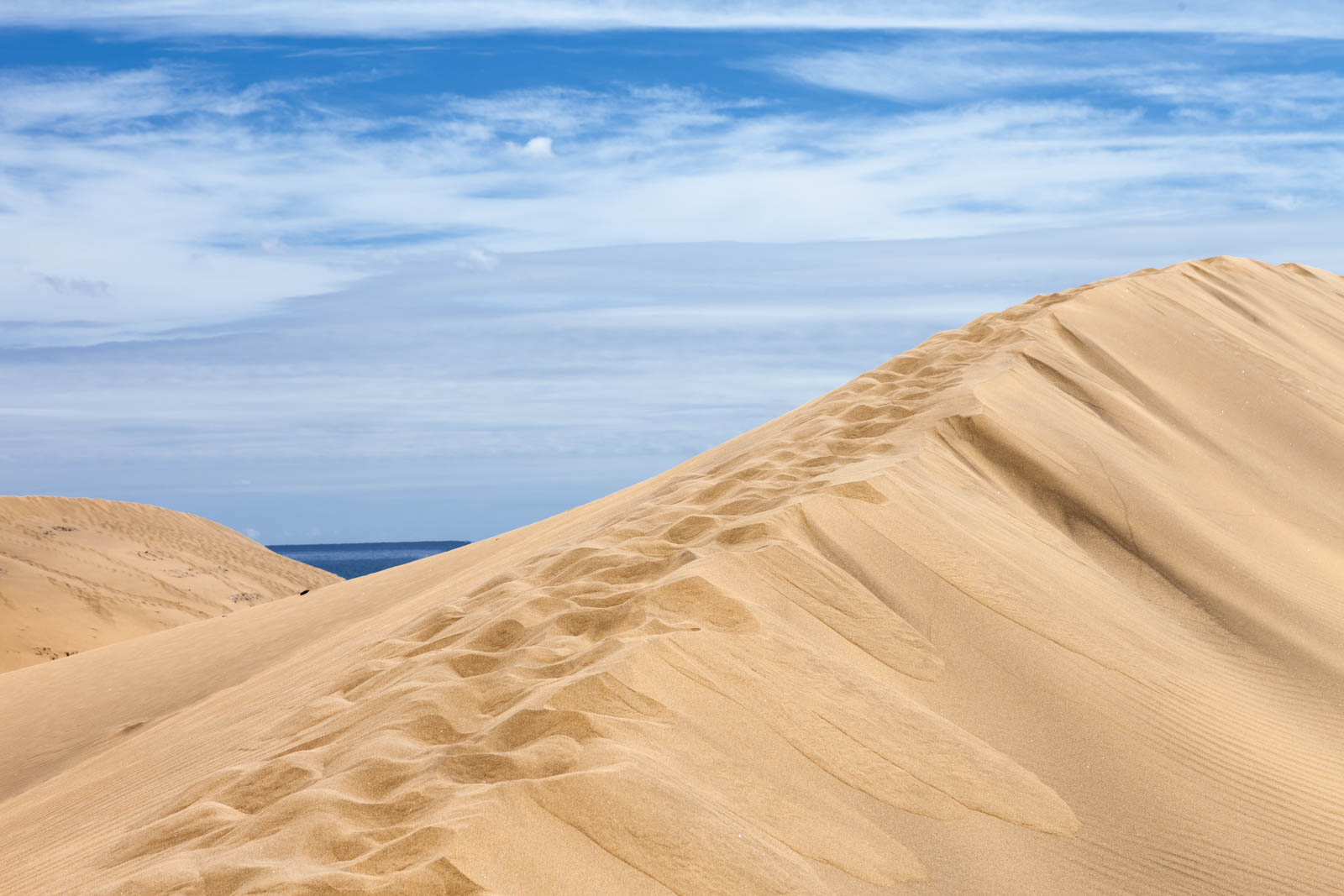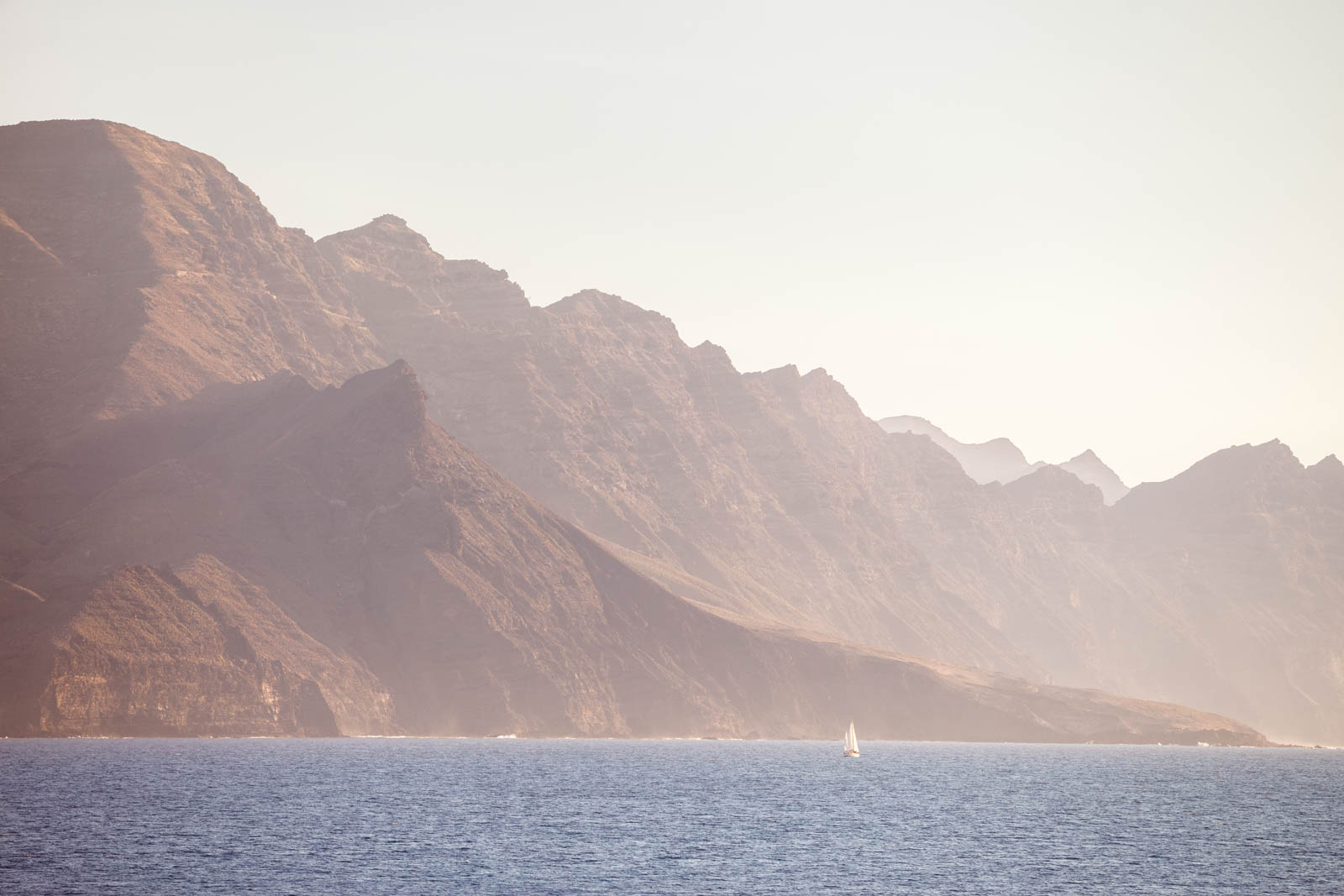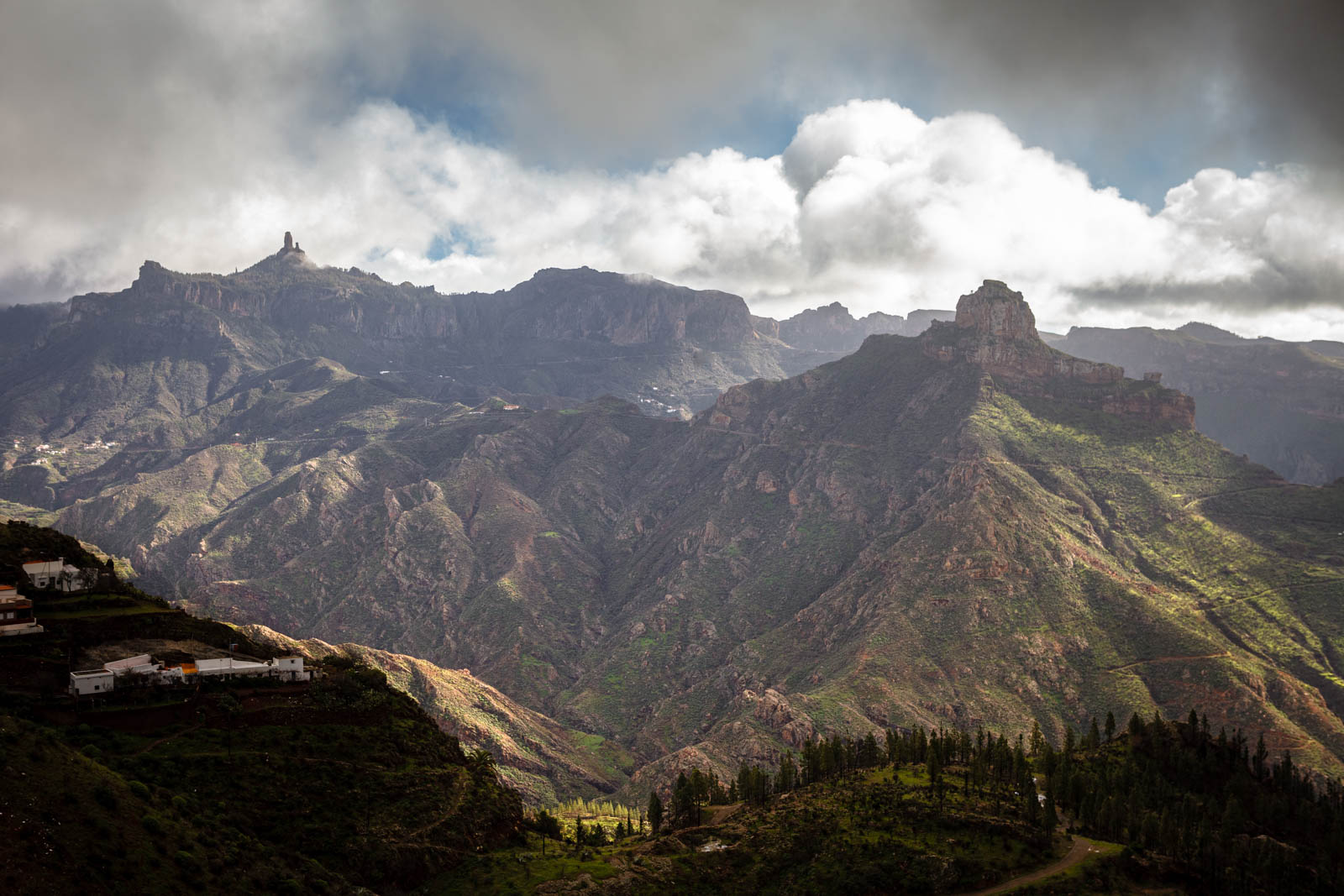Gran Canaria has the largest city in the Canary Islands, Las Palmas de Gran Canaria, and some of the most unknown natural places of the whole archipelago.
However, if you start exploring the center of the island, you can find great surprises, and thanks to this article you will discover the most unknown and sustainable places for you to visit on your trip to Gran Canaria.
Let's get started!
1. Route to Roque Nublo and Ventana del Nublo
From Gran Canaria you will surely recognize Roque Nublo and Pico de las Nieves, the highest mountain of the island. They are amazing places, a must-see, that you should not miss on a trip to this island.
Access to Roque Nublo is easy, although it requires almost an hour's walk to reach the large rock masses. The path is well marked and paved, so don’t worry about that.
Once you reach the rock, there are several viewpoints where you can admire the landscape of fire and lava that has shaped the volcanic origin of Gran Canaria. Be careful when walking along the edges of the rock, as some stones may fall off.
If the Roque Nublo is well known, a few kilometers away there is another place also spectacular and much less visited, Ventana del Nublo.
From the recreational area of Bailico the path to the Ventana del Nublo starts, following, in reverse, the path of the Camino de Santiago (yes, there is a Camino de Santiago in Gran Canaria, which connects Maspalomas with Gáldar).
This trail has a climb, although it does not require much physical demand, because in an hour and a half you have reached the window.
At this point you have fantastic views of the interior of Gran Canaria, the Roque Nublo and even the island of Tenerife and the peak of Teide.

2. Botanical Garden of Viera y Clavijo
Botanical gardens are magical places. They are always different and show you the botany of each place.
In the Botanical Garden of Viera y Clavijo black rock predominates as a landscape resource, obviously, since you are on a volcanic island, although there is also a great profusion of canals, fountains and water, something strange in the Canary Islands.
Access to the botanical garden is free, which is great! It is very large, very varied and very beautiful. You can spend several hours walking its paths, because in addition to the botanical variety, there are many charming corners, such as the stairs that ascend the hillside and the always amazing dragon trees.
3. Maspalomas Dunes
This corner of Gran Canaria is one of the most famous, because its dunes transport you without remedy to places like the Sahara.
Even so, it is one of the favorite places for all who visit the island, as you access a unique ecosystem, such as the desert, and you are next to the sea, so you do not know where the dunes end and the beach begins.
A walk, barefoot, through the dunes, is one of the best experiences on the island, especially if you get to see the sunset from here or from the nearby beach of Maspalomas, guarded by its slender lighthouse.

4. Tamadaba Natural Park
There are places that usually are only frequented by locals, as it happens with the Tamabada Natural Park. This large forest of the Canary Island pine, a native species resistant to the forest fires thanks to its pyroclastic bark, has been the main dwelling of the ancient aborigines.
And why did they choose this forest and not the peaceful beaches you may ask? Because here there’s water, food and shelter. The three essential ingredients for a comfortable life at the time.
Today the forest is the haven of peace of Gran Canaria. You can visit it by car, although it is much better to walk through it following the circular path, taking a detour to reach the viewpoint of Llanos de la Mimbre, a spectacular platform located more than a thousand meters above sea level, where there are views of the coast of Agaete and the imperturbable Teide.

5. Learn about Aboriginal culture
Sustainability is more than just reducing emissions and minimizing impact, it is also about taking care of the local culture, both enhancing and preserving it.
The local culture in Gran Canaria is that of the aborigines (not to be confused with the Guanches of Tenerife, they were different peoples), who lived in natural caves on top of the hills, had a subsistence lifestyle and are believed to have originated in North Africa.
This fascinating people have left samples of their history, language and art, something you can enjoy in the Museum of History of Gran Canaria, in the city of Las Palmas de Gran Canaria.
Museums are always a good option, but it is even better to visit the actual place where these aborigines lived.
Thus there are settlements such as La Fortaleza, in Santa Lucía de Tirajana, accompanied by its interpretation center. Here you can walk through the abode of these aborigines. There is also the Interpretation Center of the Cultural Landscape of Risco Caído and Sacred Mountains in the village of Artenara, a replica of the site of Risco Caído, declared a World Heritage Site by UNESCO, and which is very difficult to visit because of its location, hence the need for this replica.
In addition, in the same village of Artenara, there is the Ethnographic Museum Casas Cuevas de Artenara, where you can discover how living in caves has come almost to the present day.

6. 0-kilometer gastronomy in Guayadeque
Gastronomy is one of the pleasures of traveling, and nothing tastes as good as when you try it in its place of origin. The gastronomy of the Canary Islands is very rich in flavors and ingredients, although at first sight it may seem that there is little variety available in such an arid landscape. Appearances can be deceiving.
One of the best places to taste this traditional gastronomy in a local environment is the Guayadeque ravine, where you can find several typical restaurants that prepare local ingredients.
Most of the dishes are based on goat and rabbit meat, animals that are raised and live in the surrounding mountains. To see these animals, you only have to take a route through the mountains, and after a few steps you will find them. Authentic local gastronomy.
7. Transparent kayaking in Las Canteras
Finally, after so many adventures, it's time to relax practicing some sport on the peaceful beach of Las Canteras, in Las Palmas de Gran Canaria.
This great sandy beach, possibly one of the best in Spain, has a peculiarity: that the stone barrier slows the waves, creating a large pool full of life.
The most interesting way to discover it is in a transparent kayak, which allows you to see the bottom of the waters you are sailing. The best time to do this activity is at night, since the marine animals will approach the small light of the kayak, enjoying the experience even more.
You can also swim in, but be careful, some fish bite.
These are some of the best sustainable plans in Gran Canaria. Of course, there are many more, such as walking to Güigüi beach, stargazing at Pico de las Nieves or camping in one of the recreational areas of the mountain.
Besides, if you want to discover more sustainable consumption options on the island, click here.
I hope you enjoy the activities on your trip to the island, and may the sustainability be with you!








